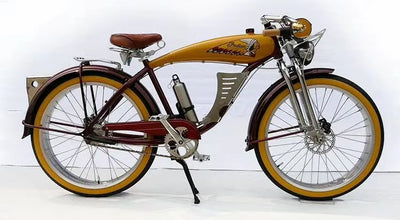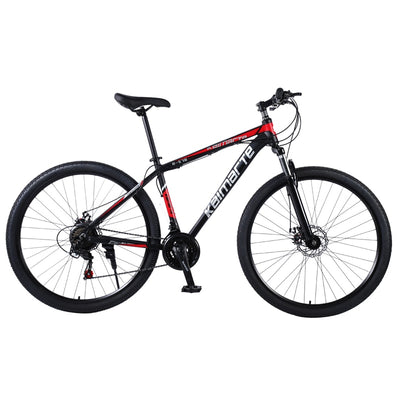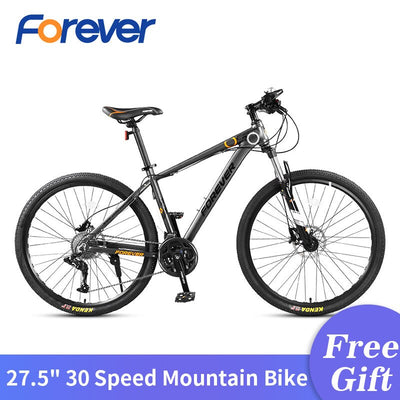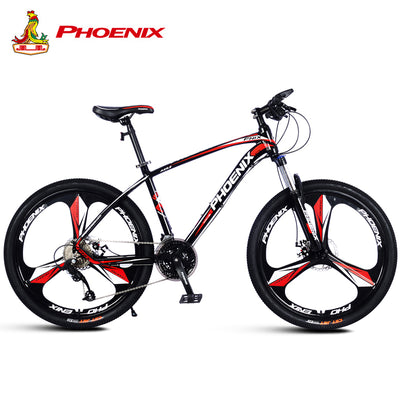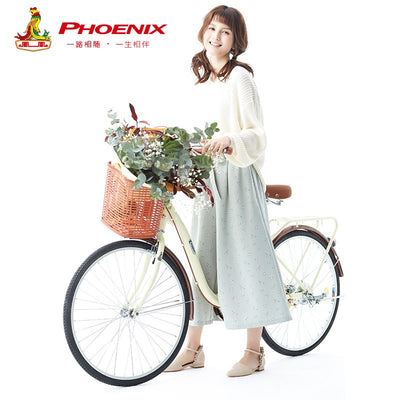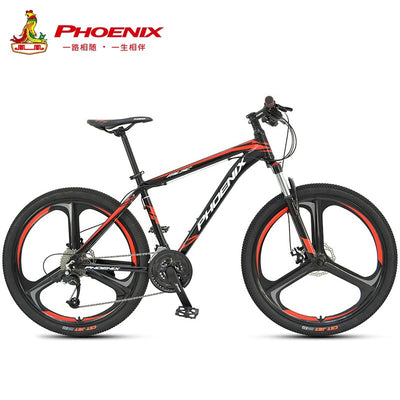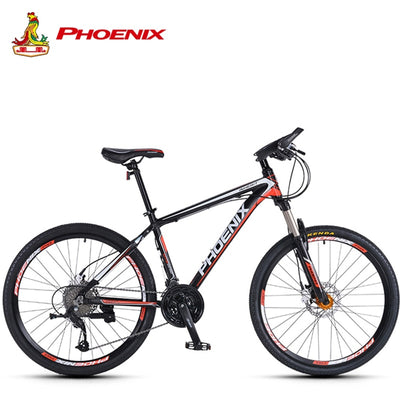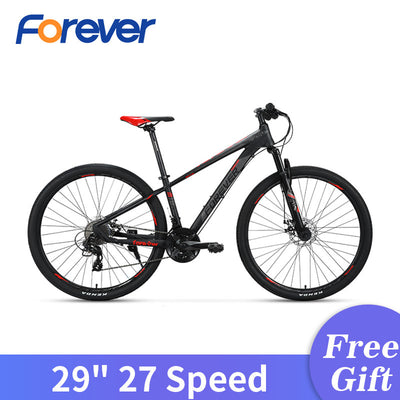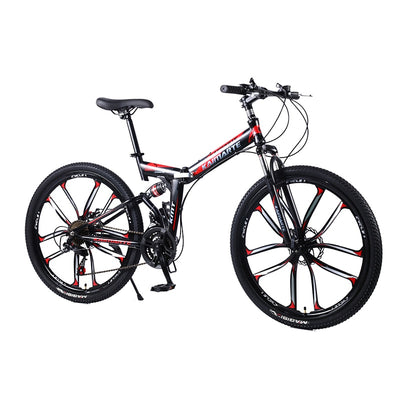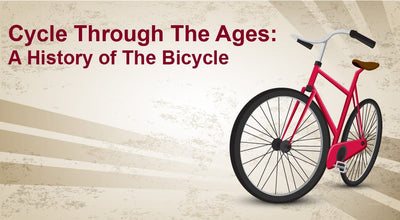How to Choose the Children Bicycle for Your 5 or 7-Year-Old kid
Posted by Tom Lee on
Nothing compares to the simple pleasure of a bike ride.
It is a well-known fact that bicycles are much more than mere playthings. They are a tool to learn concepts of inertia, coordination, and balance while enjoying activities like pedalling, braking, and steering.
Probably one of our fondest memories as children is zooming through streets on our trusted bicycle. As parents and grandparents, we hope to pass down these experiences through generations by gifting our little ones their first bike. However, given the different options and wide variety in the market, it can be tough to know which bicycle is indeed the best.
So, if you are caught up thinking “How to choose a bike for my 5 or 7-year-old?”, here’s a handy guide to help you in this hunt:
What Bike Size Does Your Child Need?
The size of the bike is the most crucial factor while making a purchase. The bike size is expressed as a measure of the diameter of the cycle wheel. This leads us to the question: what is the appropriate wheel size for kids’ bicycles?
Here’s a table outlining the bike size as a factor of the wheel size and your child’s height, which helps determine what sized bike they need:
As mentioned in the table, children between the age of 5 to 7 years should be given a 16-inch bike. Your kid will be able to easily mount or dismount the bicycle, and maintain a flat-footed position while straddling it. Their seating posture should indicate comfort, with enough room to pedal and adequate proximity to steer smoothly.
Now that you have learnt about the ideal bike size, let’s explore the other factors that are important to shortlist the best 16-inch bicycles along with their pricing.
Buyer’s Guide To Choose Cycles for Boys and Girls
Here are a few features that you must consider while looking for kids' bikes for 5 to 7-year-olds:
Price
Let’s face it, children's bikes for 5, 6, or 7-year-olds will not last them for a long time. By this, we mean that children will easily outgrow their bicycle in a year or two. Hence, it would only be sensible to stick to your budget and not overspend unless absolutely required.
It is a fact that more expensive bikes will definitely perform better and add more value to your purchase than their lower priced alternatives. But not everyone would want to spend a huge sum on a kids' cycle, so it all boils down to personal budget and the features that are an absolute must,as against features you are willing to compromise on.
Weight
Interestingly, adults ride bikes that weigh 20% of their total body weight, while children ride bikes that are nearly 50% of their weight! This fact may make you wonder what bike weight they need. Ideally, children should ride bikes that are less than 40% of their total body weight.
Lightweight bikes are made from alloys. By virtue of their reduced weight, they can be easily manoeuvred. Companies that manufacture high-quality bicycles take into account several design considerations to ensure that the bike's weight is maintained at its lowest possible requirement.
As a buyer, you should look for the lightest bike, that also fits your budget.
Design

The design of the bicycle frame plays an important role in your kid’s safety. As these bikes will be at the beginner-level, you should opt for ones with a lower centre of gravity. Such bikes are easy to balance and manage.
Look for bikes that have longer frames and lower minimum seat height. Bicycles with a larger wheelbase will allow for a spacious cockpit. Additionally, mid-rise handlebars allow for a comfortable riding posture that will neither tire out the rider nor upset the balance. Accommodating cockpits paired with ergonomic handlebar designs will offer comfort while steering the bike, and prevent the kid's knees from hitting the handlebars.
Brakes
Brakes are singularly the most important mechanism in a bicycle. They offer control over the bicycle’s speed. There are two main types of braking mechanisms in children's bikes - Coaster Brakes and Hand Brakes. Let’s first understand these two types in detail.
Coaster Brakes
Coaster Brakes are also known as back-pedal breaks. Kids’ bikes commonly feature coaster brakes as they are cheaper and easier to maintain. However, backpedalling is an essential part of learning how to pedal. Thus, coaster breaks could cause unexpected halts and falls, while also impeding the process of learning how to pedal.
Hand Brakes

Children's bikes for 5-year-olds and above are equipped with hand brakes as children above the age of 4 or 5 years have already mastered gripping and hand-eye coordination. While hand brakes are considered to be more efficient, they do require quite a bit of maintenance.
Hand brakes may be classified into the following types:
- Single-pivot
- V-pull
- Disc
- U-pull
- Cantilever
When selecting a bike with hand brakes, you need to test if kids can operate them. To test that, try pulling on the brake lever with their pinkie finger. If the brakes are tight, adjust the level so that your kids can easily squeeze them to make the bike stop. Well-designed brakes are expected to be easier to activate with minimal effort from the child.
Wheels
Several safety guidelines dictate that the front wheel of bicycles must possess safety mechanisms to ensure that the wheel does not fall off even if the nuts fall off the axle. Furthermore, look for a bicycle that has wheels with a metallic hub, rim, and spokes. To test the strength of the wheel frame, hold the tire and wiggle the wheel from one side to another. If you feel a slight pull, there are chances that the wheels need to be realigned. At the same time, when you give the wheels a quick spin, they should move freely and effortlessly.
Finally, choose a bike with a larger wheel size, as it makes rolling over obstacles easier.
Tires
Bike tires come in many forms. They could be solid rubber, hard plastic, honeycomb rubber, pneumatic, or solid foam. A sizeable chunk of bikes make use of pneumatic tires as they offer a cushioned ride with good grip. Choose a tire depending on the type of terrain where your child will ride the bike. Accordingly, you must also pick out the tire's tread patterns. Deep-groove tread tires offer a stronger grip on rough terrains; while slick tires can roll off easily on smoother roads.
Frame
Given that children's bikes experience a more rough and tough usage, bike frames are stronger and better equipped at handling it. The frame should be robust and rigid, preventing it from moulding. The various parts of a bicycle, such as the handlebar stem, seat post, etc. should be firmly bolted to the frame, so that they are incapable of budging from their place.
To check if the bike's frame is aligned, stand a few feet from the bike, either at the front or at the back. Now check both the wheels and observe whether they fall on the same plane. If yes, congratulations, your child's bike frame is perfectly aligned.
Drive Train
The mention of bike chains will fill your head with memories of sticky fingers and black grease. While the experience of putting a bike chain back in its sprocket is fun, it can be unpleasant to do it over and over again. To avoid the messiness of this task, certain manufacturers have introduced grease-free, and maintenance-free belt drives in transportation. Adult bike manufacturers have also capitalized on this market opportunity.
Belt-driven bicycles are said to offer greater convenience, better cleanliness, and ease of usage to the cyclist. As compared to the traditional chain drive, the rounded teeth of the belt drive also offer greater control and stability.
Q-Factor
The distance between the ends of the pedals is known as Q-factor. If the Q-factor is too large, kids will have to splay their legs outwards, making pedalling inefficient and uncomfortable. When the Q-factor is too narrow, the child may feel restricted in his/her movements, which could also result in injuries.
At an optimum Q-factor, kids can easily start pedalling while extracting the maximum torque with minimum effort.
Other Key Considerations
The factors mentioned above are the primary considerations that answer the question: ‘How to choose a bike for my 6-year-old?’ Here are a few more pointers to keep in mind:
Grips
Most kids' bikes have flat handlebars, which means that grips play a vital role in controlling how the child handles the bicycle. If you are planning to include grips on your child's bicycle, ensure that they are not too thick, as their small hands may not be able to hold them correctly. Further, grips with large bulges towards the outer ends can better protect the bicycle in case of scrapes and falls.
Stands
Not all bikes come with a kickstand installed on their bodies, making it an optional feature. However, having one for your kid’s bike will prevent them from leaving their bicycles sprawled on the floor or parked against a wall. That said, bikes with training wheels do not need kickstands.
Accessories
Give your child the freedom to personalize his or her bicycle with accessories. Whether it is a bell or a basket - allow them to unleash their creativity and have the bike of their dreams. It will add more ownership and value to the bicycle. Other accessories like helmets, knee caps, and elbow pads are also vital to ensure safety.
Warranty
When buying a bicycle, warranty is always a key consideration. Fortunately, all Firefox Kids’ Bikes offer lifetime warranty on the frame, and a 6-month warranty on the fork, rear suspension, and all original components and accessories (except tires and inner tubes, that are subject to wear and tear). So, when you go for a Firefox Bike, you get complete assistance from the brand and/or dealer in case of repair and replacement of defective items/damages.
Training Wheels
Training wheels or stabilizers are often used to help your child learn the art of balancing. They instil confidence and provide stability as your child attempts to ride a bike. They also come in handy when kids lack the strength to pedal, or when the bike weight is too much. If you want to go for a bike with training wheels, Firefox Kids’ Bikes offer a great range of options. Each of the attractive kids’ bikes come with sturdy training wheels that give your kid the confidence to ride fearless, while helpingthem maintain balance during their early adventures.

Are Boys’ and Girls’ Bikes Different?
No! For young bicycle riders, boys’ and girls’ bikes are essentially the same.
The only stark difference between bicycles meant for boys and girls would be in outward appearance. Boys’ bikes tend to be in shades of blue and black, while girls’ bikes are more vibrantly coloured.
Tips for Bicycle Shopping
Here are a few tips to keep in mind when you're bicycle shopping:
- Check the bike’s weight against its competitors and choose the lightest one
- Ensure that the child can operate the brakes comfortably
- Check for safe stopping and comfortable pedalling design considerations
- Pick the right bike size as per your child’s measurements
Final Thoughts
To recap what we just read, the size of the bike depends on your child's age and inseam. Also, the bike should fit the child, and not vice versa. It’s important to pick the perfect fit rather than buying a larger bike to last them a longer duration.
Now that we have answered your primary question of 'what sized bike should my 5 to 7-year-old ride?' along with relevant buyer’s considerations, you are in a better position to choose the best bike for your kids.
When you finally find the perfect balance between cost and features, you will be able to gift your child the most memorable part of childhood.

